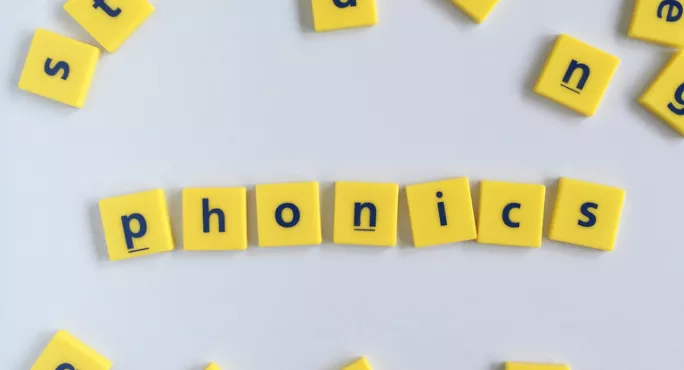- Home
- How neuroscience suggests that phonics works best
How neuroscience suggests that phonics works best

Among literate individuals, written words are always processed in the left side of the brain (primarily in a small neural region known as the visual word form area [JH1], or VWFA). It is believed this part of the brain serves to break down words into phonological chunks [JH2] so that they can later be built back up to derive meaning via frontal regions of the brain.
In short, effective reading appears to require auditory discrimination: a significant tick in favour of the phonemic awareness camp when it comes to the so-called “Reading Wars” between competing beliefs of how best to teach children to read.
Dyslexia, phonics and reading: a video guide to the neuroscience
A common question asked after learning about this neurological mechanism concerns foreign languages.
Sure, this process of phonological decomposition makes sense for alphabetic scripts like English - but does it still occur with syllabic scripts (whereby each character represents a complete syllable) or logographic scripts (whereby each character represents a complete word)?
It turns out, yes.
Phonics and reading
The reason concerns “granularity”. Put simply, it appears that the VWFA can re-tune itself [JH3] to align with the smallest unit of sound relevant to each different form of writing [JH4] .
For instance, written using the Roman alphabet, the word “English” has six phonemes. When reading this word, the VWFA breaks the word into six units and works to assign a phoneme to each.
However, in Cherokee syllabary, the word “Cherokee” is written using only three letters (CWY: C = Che, W = Ro, Y = Kee). In this instance, the VWFA breaks the word into three units [JH5] and works to assign a complete syllable to each.
Furthermore, in Mandarin logographic, the phrase “tall mountain” is written using only two symbols ( 高山 ). In this instance, the VFWA breaks the sentence into two units [JH6] and works to assign a complete sound to each.
Seeing as the process of breaking words down into relevant units of sound does not change across cultures or scripts, this suggests that deriving character/sound combinations is a key component to literacy development.
Dyslexia and reading
Interestingly, dyslexia supplies another line of evidence in favour of phonologic training. Within the UK, around 10 per cent of people [JH7] are estimated to have dyslexia. Within Italy, however, only around 3.5 per cent of people [JH8] are estimated to have dyslexia.
Seeing as both countries use the same alphabetic script, why might this be?
Italian is a transparent language: it contains about 25 phonemes that require only 33 written [JH9] character combinations to represent. Seeing as the “rules of Italian” never change between words, few students struggle to master reading.
English, on the other hand, is an opaque language: it contains about 44 phonemes that require over 1,100 written [JH10] character combinations to represent. Seeing as the “rules of English” change frequently between words, many students struggle to master reading.
The fact that phonological opacity can drive dyslexia is further evidence that character/sound discrimination is essential for reading and should likely form a foundation of early literacy training.
Jared Cooney Horvath is a neuroscientist, educator and author. To ask our resident learning scientist a question, please email: AskALearningScientist@gmail.com
References
- [JH2] Dehaene, S, and Cohen, L (2011). The unique role of the visual word form area in reading. Trends in cognitive sciences, 15(6), 254-262.
- [JH3] Dehaene, S (2013. Inside the Letterbox: How Literacy Transforms the Human Brain
- [JH4] Cohen, L, et al (2002). Language‐specific tuning of visual cortex? Functional properties of the Visual Word Form Area
- [JH5] Lair, A, Li, K, and Fox, P (2005). Neuroanatomical correlates of phonological processing of Chinese characters and alphabetic words: A meta‐analysis
- [JH6] Bolger, J, Perfetti, C, and Schneider, W (2005). Cross‐cultural effect on the brain revisited: Universal structures plus writing system variation
- [JH7] Maurer, U, Zevin, J, and McCandliss, B (2008). Left-lateralized N170 Effects of Visual Expertise in Reading: Evidence from Japanese Syllabic and Logographic Scripts
- [JH8] CACHE. Dyslexia - the facts
- [JH9] Barbiero, C, et al (2019). The lost children: The underdiagnosis of dyslexia in Italy. A cross-sectional national study
- [JH10] Lawson, W (2006). Dyslexia More Difficult in English, French
Register with Tes and you can read two free articles every month plus you'll have access to our range of award-winning newsletters.
Keep reading with our special offer!
You’ve reached your limit of free articles this month.
- Unlimited access to all Tes magazine content
- Save your favourite articles and gift them to your colleagues
- Exclusive subscriber-only stories
- Over 200,000 archived articles
- Unlimited access to all Tes magazine content
- Save your favourite articles and gift them to your colleagues
- Exclusive subscriber-only stories
- Over 200,000 archived articles



